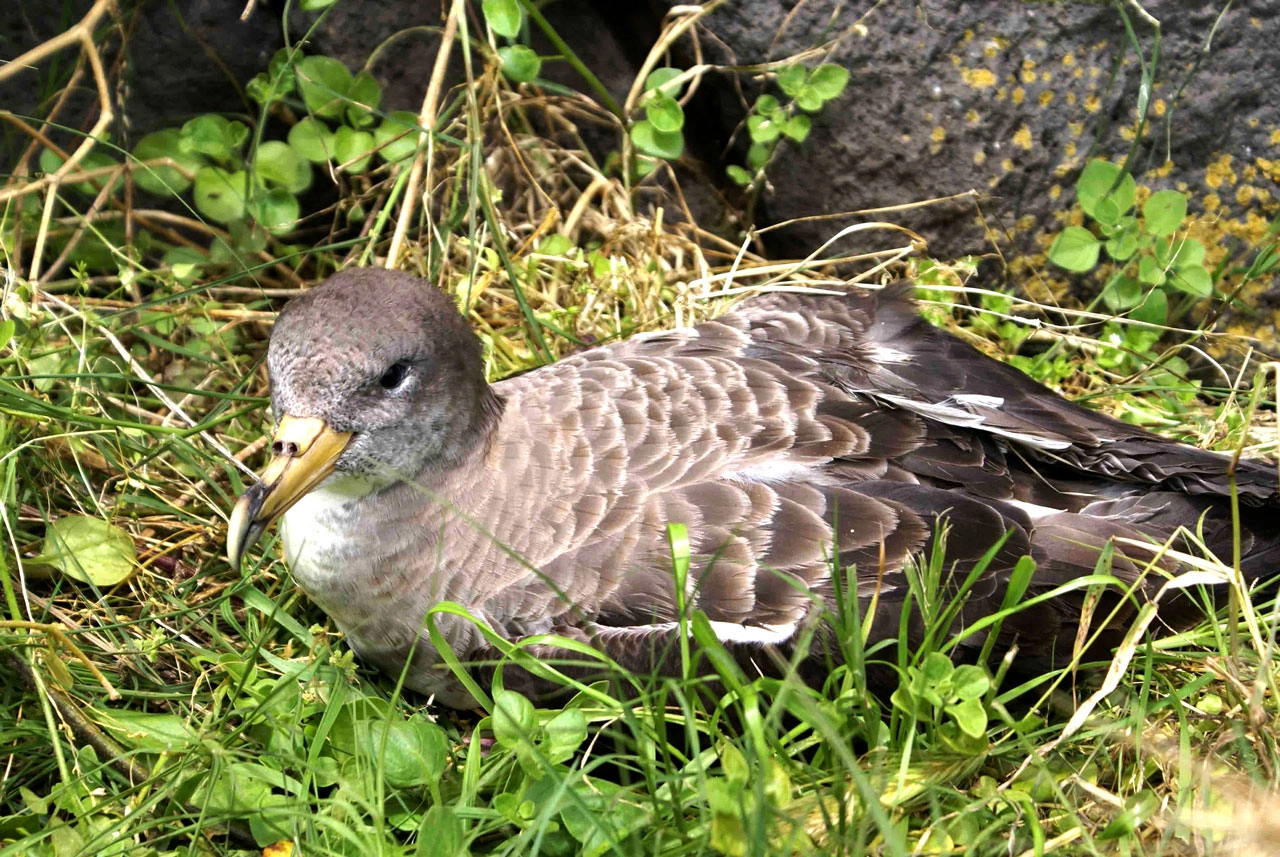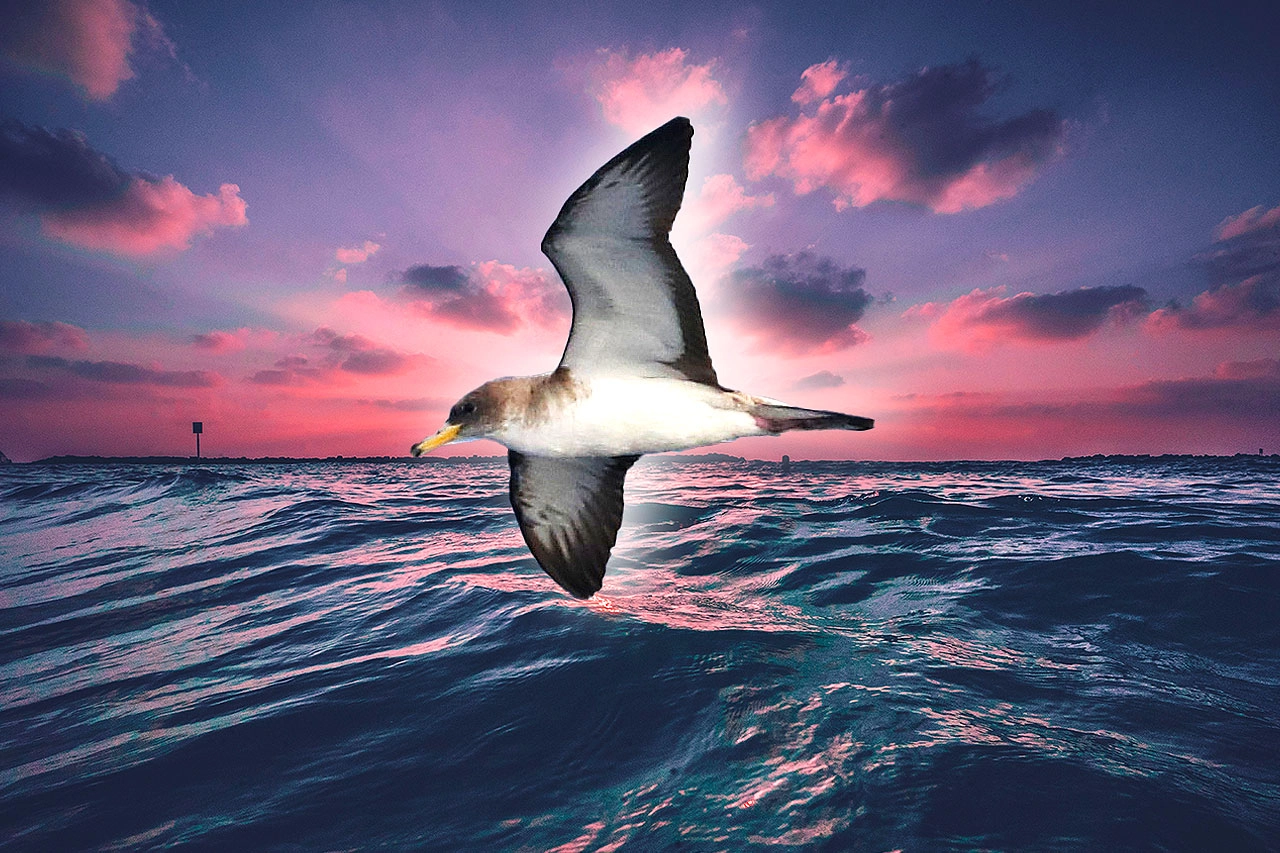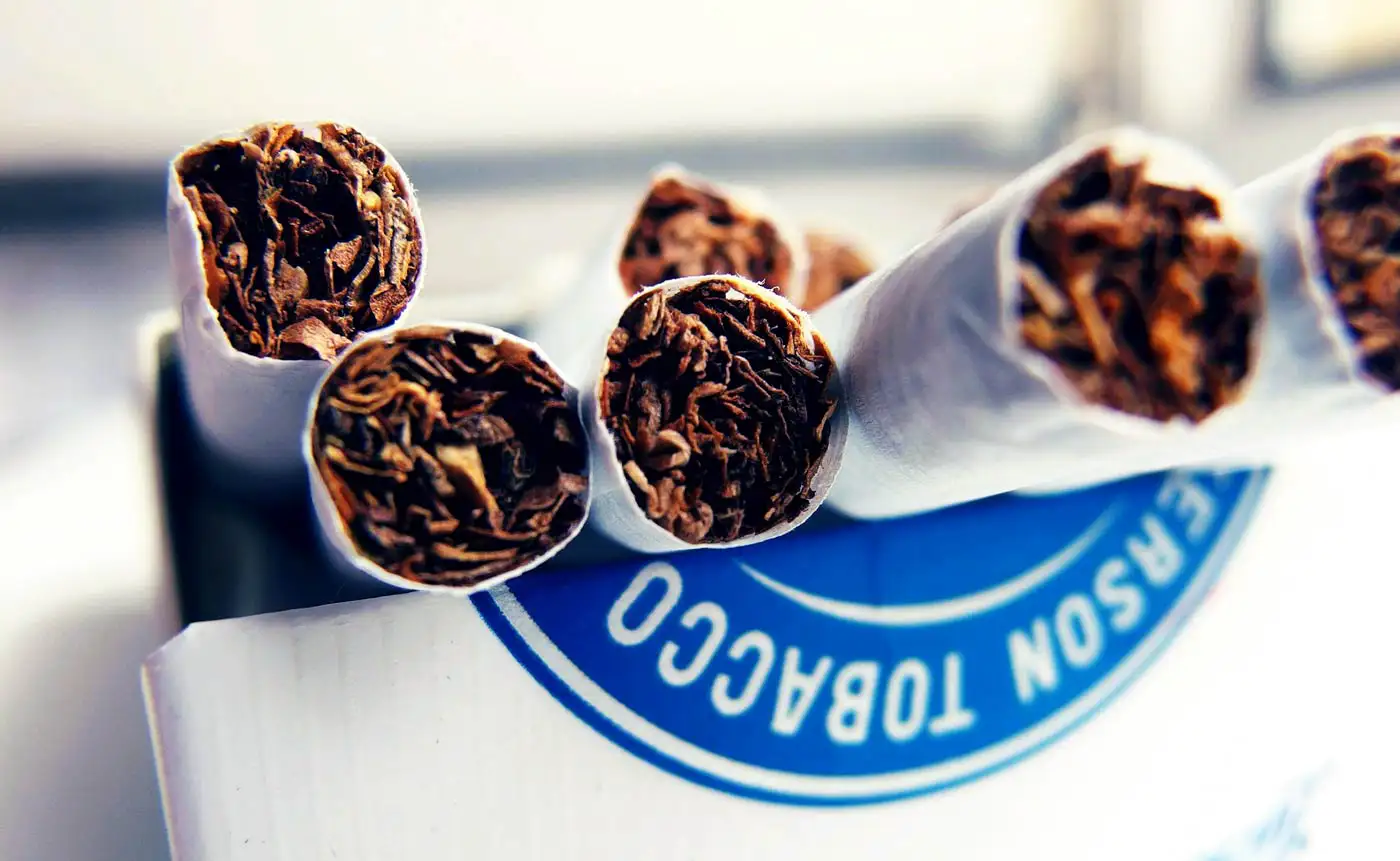Cory's Shearwater
If you live in Madeira or have spent some time close to one of its many cliffs, you have probably heard - knowingly or unknowingly - the unique bird sound of Cory’s Shearwater.
Known locally as "Cagarra" (Calonectris borealis), Cory's Shearwater is a big shearwater bird named after the American Charles B. Cory (19th century). It later got classified as Calonetrics, which is a name from the Ancient Greek "kalos," signifying "good" or "noble," and the genus name "Nectris," which is the former name used for shearwaters.
Cory’s Shearwater is regarded as a monotypic species, thus lacking any officially acknowledged subspecies. It is constantly migrating and settles only for the breeding season.
The bird breeds on rocky islands in the eastern Atlantic, mainly in the Azores and Madeira Islands. Outside of the breeding season, it travels across the Atlantic. The Selvagens Islands in Madeira are particularly noteworthy for having the largest bird population relative to their land size.
With a wingspan of 90 to 105 cm, Cory's Shearwater stands out among birds, creating a mesmerizing sight along Madeira's coastline.
Distinctive “Wailing” Sounds
Cory’s Shearwater is widely known for its distinctive "wailing" sounds during the breeding season, creating a unique auditory experience along Madeira's shores. Once the breeding season is over, they become silent again.
Cory’s Shearwater also exhibits distinct gender-based vocalizations. Females produce a husky quality in their voice due to rapid amplitude modulation, creating fluctuations nearly 100 times per second. Females generate sounds balancing between a sharp noise and a deep hum, visible in sonograms displaying both qualities.
A study revealed that wild female Cory Shearwaters have an average vocalization frequency of 84 Hz, contrasting with males at 367 Hz.
Males display regular frequency bands, while females exhibit irregular and puzzling patterns. Additionally, female birds may simultaneously produce a secondary, softer tone, causing disruptions in the lower fundamental frequency and contributing to observed irregularities in sonograms.
Male and female birds have the remarkable ability to recognize and distinguish each other's calls. Additionally, they can identify their own mates. However, it remains uncertain whether they can pick out the calls of their nearest neighbors.
Before they hit approximately 11 weeks, young Cory’s Shearwaters have two distinct calls they use when begging for food. The long begging call is the more common one, especially when a parent is around, but it can also give away the location of a lone, hungry nestling.
The rhythmic call is not used much by Cory’s; it seems to be reserved for initiating feeding sessions and as a way to communicate with parents. Once they reach 11 weeks, nestlings develop adult-type calls, allowing us to tell apart males and females before they leave the nest.
Food & Hunting
The Cagarra unsurprisingly feeds on fish, most of the time. But molluscs and offal are also on the menu. His hunting repertoire combines social and individual skills. It spends time in large numbers when following fishing boats but it can also solo-deep-dive up to 15 meters when individually hunting for prey.
Age and Population
With a lifespan of up to 25 years, Cory's Shearwater plays a vital role in Madeira's biodiversity, boasting approximately 30,000 breeding pairs on the island's rugged cliffs.
Nesting and Reproduction
From April to October, witness the nesting colonies of Cory's Shearwater as they lay a single egg, contributing to the ecological richness of Madeira's coastal landscape. The nests are often located in shady places like dark caves or cavity hideouts. The Incubation period takes around 54 days.

Unique Traits of The Cory Shearwater
Nocturnal Hunters: Foraging under cover of darkness, showcasing their adaptability.
Extraordinary Endurance: Exceptional navigators covering vast distances during migration.
Deep Diving Prowess: Diving up to 15 meters for fish, displaying remarkable hunting skills.
Social Nesting: Colony nesting during the breeding season, exhibiting social behavior.
Long-Distance Communicators: Using distinct calls for communication across extensive oceanic ranges.
Conservation Efforts and Threats
The Cory's Shearwater bird, as per the Red List of Species, is currently not considered under threat (“Least concern”). Its reproductive rate aligns well with the level of self-sustainability, indicating a stable population. Despite this positive assessment, it's crucial to note that there are human-made threats endangering this species.
The issue of pollution: particularly plastic contamination, poses a significant threat to many bird species. Disturbingly, a growing number of birds are being ensnared by plastic debris, leading to the ingestion of these harmful materials. This ingestion can have severe consequences, as the plastic can accumulate in the stomachs of birds, potentially causing starvation and various health issues.
Also, mammals like housecats or rats are a danger, especially to the young offspring, as they are unable to defend themselves against felines or rodents.
Fishing, whether on a big or small scale, poses a threat because these birds often get accidentally caught. In Spain, a 2014 study found that Cory's Shearwater is the primary bird affected by longline fishing.








Comments